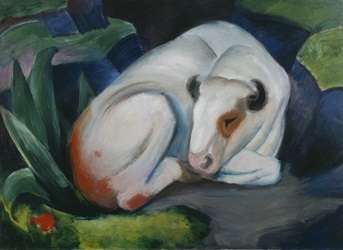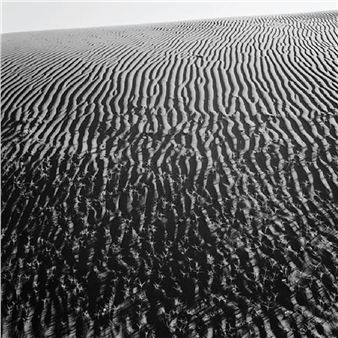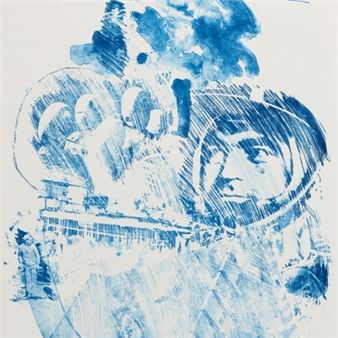Vasily Kandinsky and Franz Marc: Der Blaue Reiter
As a logical successor to the EPMA鈥檚 first Modern Masters Series: Highlights from the Solomon R. Guggenheim Museum installment that explores the beginnings of Cubism in works by Paul C茅zanne and Pablo Picasso, this second Guggenheim focus installation鈥擵asily Kandinsky and Franz Marc: Expressionism and Der Blaue Reiter鈥攅xamines the bold and colorful energy of two leaders of German Expressionism, which followed closely on the heels of Cubism as the next major modernist style of the early twentieth century.
Along with the Dresden-centered The Bridge (Die Br眉cke), The Blue Rider (Der Blaue Reiter) represented the core of German Expressionism, a movement which borrowed ideas from painters like Vincent van Gogh, and that influenced subsequent generations of artists, including Neo-Expressionism in the 1970s. Led by Kandinsky and Marc, Der Blaue Reiter focused on the psychology and emotion of colors, spirituality in art, and the Weimar Bauhaus in the 1920s, will be featured in an upcoming installment.
The pair of Guggenheim works by Kandinsky and Marc鈥攔espectively Landscape with Factory Chimney (1910) and White Bull (Die Stier, 1911) demonstrate powerful beginnings of Der Blaue Rieter. They express the artists mutual interest in expressive, arbitrary, and brilliant saturated colors; bold simplified forms; and symbolic interpretations of the natural world. The works also illustrate each each man鈥檚 unique vision - Marc鈥檚 empathetic connection with the animal world, and Kandinsky鈥檚 special inclination toward abstraction. Together, the paintings evoke a brief but significant moment in twentieth-century modernism as Kandinsky returned to his native Russia only a few years later, compelled by the outbreak of World War I, and Marc died while serving in the German army while stationed on the Western front.
Finally, another key feature of Der Blaue Reiter was its theoretical focus on the connection between visual art and music. Therefore, it is especially fitting that among the many related programs being planned around the exhibition is a free performance of the Kandinsky-Alfred Schnittke work titled The Yellow Sound (Der Gelber Klang) that will be performed by the El Paso Opera.

Recommended for you
As a logical successor to the EPMA鈥檚 first Modern Masters Series: Highlights from the Solomon R. Guggenheim Museum installment that explores the beginnings of Cubism in works by Paul C茅zanne and Pablo Picasso, this second Guggenheim focus installation鈥擵asily Kandinsky and Franz Marc: Expressionism and Der Blaue Reiter鈥攅xamines the bold and colorful energy of two leaders of German Expressionism, which followed closely on the heels of Cubism as the next major modernist style of the early twentieth century.
Along with the Dresden-centered The Bridge (Die Br眉cke), The Blue Rider (Der Blaue Reiter) represented the core of German Expressionism, a movement which borrowed ideas from painters like Vincent van Gogh, and that influenced subsequent generations of artists, including Neo-Expressionism in the 1970s. Led by Kandinsky and Marc, Der Blaue Reiter focused on the psychology and emotion of colors, spirituality in art, and the Weimar Bauhaus in the 1920s, will be featured in an upcoming installment.
The pair of Guggenheim works by Kandinsky and Marc鈥攔espectively Landscape with Factory Chimney (1910) and White Bull (Die Stier, 1911) demonstrate powerful beginnings of Der Blaue Rieter. They express the artists mutual interest in expressive, arbitrary, and brilliant saturated colors; bold simplified forms; and symbolic interpretations of the natural world. The works also illustrate each each man鈥檚 unique vision - Marc鈥檚 empathetic connection with the animal world, and Kandinsky鈥檚 special inclination toward abstraction. Together, the paintings evoke a brief but significant moment in twentieth-century modernism as Kandinsky returned to his native Russia only a few years later, compelled by the outbreak of World War I, and Marc died while serving in the German army while stationed on the Western front.
Finally, another key feature of Der Blaue Reiter was its theoretical focus on the connection between visual art and music. Therefore, it is especially fitting that among the many related programs being planned around the exhibition is a free performance of the Kandinsky-Alfred Schnittke work titled The Yellow Sound (Der Gelber Klang) that will be performed by the El Paso Opera.
Artists on show
Contact details


 ARTISTS
ARTISTS














